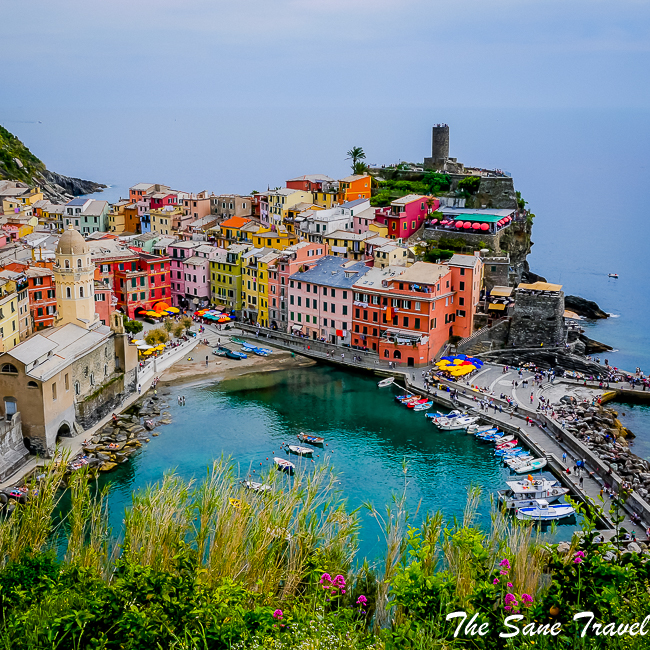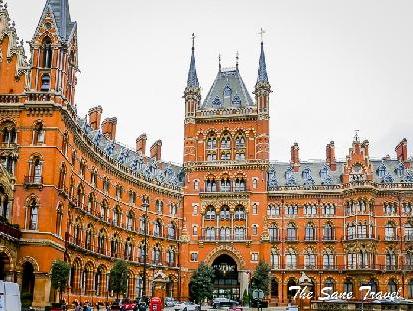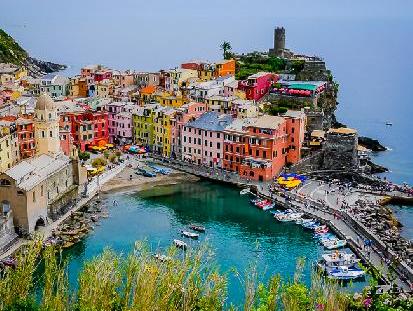Brief background of UNESCO Heritage Sites
The idea of creating an international movement to protect heritage emerged after World War I. The 1972 Convention on Protection of World Cultural and Natural Heritage developed from merging two separate movements: one focusing on preservation of cultural sites, and the other dealing with conservation of nature. Registrations in UNESCO heritage list are not bestowed lightly. There are 1,052 World Heritage Sites located in 165 states. Of these, 814 are cultural, 203 are natural and 35 are mixed properties.
Here are my 15 best Instagram pictures of 15 UNESCO heritage sites I have visited in Europe. Visit my Instagram account to see more.
Belarus
As of today, 4 Belarusian sites have been included into UNESCO World Heritage List. Pictured, two of them:
1) Mir Castle
In 2000, the Mir Castle Complex, which was built at the beginning of the 16th century, was added to UNESCO World Heritage List. A successful blend of Gothic, Baroque and Renaissance architecture makes Mir Castle one of Europe’s most impressive castles. Read more about castles, palaces and mansions of Belarus clicking this link.
2) Nesvizh Palace Complex
In 2005 the Architectural, Residential and Cultural Complex of the Radziwills in Nesvizh was inscribed onto UNESCO World Heritage List. For centuries, Nesvizh Palace used to be the residence of the Radziwills, one of the richest dynasties in Europe. Today the National Historical and Cultural Museum-Reserve Nesvizh, a wonderful restored castle, is a landmark of Belarus. Find out how to get most of 5 days visa free visit to Belarus clicking this link.
Latvia
3) Historic centre of Riga
Riga’s medieval old town and its surrounding city centre was designated a UNESCO World Heritage site in 1997. Although its 13th-century churches helped the city achieve this status, it’s Riga’s art nouveau architecture that really sets the city apart from other European capitals. To quote UNESCO’s World Heritage website: ‘The Historic Centre of Riga has the finest concentration of Art Nouveau architecture in the world.’ Learn how to become an expert of Art Nouveau architecture in Riga in half an hour clicking this link.
Pictured: Art Nouveau building at number 10b Elizabetes iela, Riga.
Lithuania
Lithuania has 4 UNESCO heritage sites. Some of the sites are great for anchoring your trip but others may only have a historical importance that is hard to understand today. Old Town of Vilnius was added to the list in 1994.
4) Vilnius historical centre
Vilnius started to develop as a city in the 13th century under the Grand Duchy of Lithuania (1236-1795), becoming its capital in 1323. Until the end of the Grand Duchy of Lithuania, Vilnius was the political centre of the country and its architecture influenced most of Eastern Europe. The Vilnius Historic Centre is made up of the premises of three castles and has architecture from Gothic, Renaissance, Baroque and other styles. Read about 8 must see sights of Vilnius clicking this link.
Poland
Poland has 13 cultural and 1 natural UNESCO heritage site. I pictured two of them: Historic Centre of Krakow (1978) and Historic Centre of Warsaw (1980).
5) Warsaw
The historic centre of Warsaw constitutes an exception on UNESCO’s World Cultural Heritage List. It’s the only urban complex almost entirely reconstructed after the WWII total destruction. The careful reconstruction was so well done that the international community demonstrated its great appreciation through putting the historic city centre of Warsaw on the list of unique world heritage sites. The small medieval settlement quickly developed to acquire its municipal rights in the early 14th century. In early 17th century, Warsaw castle became the seat of King Sigmund III Waza, who just at that time transferred the country’s capital from Krakow to Warsaw. World War II brought total destruction to the oldest part of the city. Other quarters of Poland’s capital also lay in ruins. The reconstruction of the city took several years, and the rebuilding of the Royal Castle only started in 1971. Find out how to plan your Warsaw itinerary clicking this link.
6) Krakow
The Historic Centre of Krakow, the former capital of Poland, is situated at the foot of the Royal Wawel Castle. The 13th-century merchants' town has Europe's largest market square and numerous historical houses, palaces and churches with their magnificent interiors. Further evidence of the town's fascinating history is provided by the remnants of the 14th-century fortifications and the medieval site of Kazimierz with its ancient synagogues in the southern part of town, Jagellonian University and the Gothic cathedral where the kings of Poland were buried. Get more ideas what to see in Krakow clicking this link.
Czechia
Czechia has 12 properties inscribed onto the World Cultural Heritage List. I pictured 3 of them.
7) Historic Centre of Český Krumlov
Discover a true gem among the UNESCO monuments – Český Krumlov (1992). When you arrive in Český Krumlov, you will be captivated at first glance by the monumental panorama of the chateau here, which rises above the picturesque Renaissance architecture of the adjacent little town. Taking a walk through the historical centre will, thanks to its inimitable medieval character, leave you in no doubt as to why Český Krumlov is one of the gems included on the UNESCO list. See 19 more pictures of Český Krumlov clicking this link.
8) Historic Centre of Prague
The Czech Republic’s capital city of Prague (1992) is regarded as one of the world’s most beautiful and romantic cities. The Gothic skyline – Prague is often known as the city of 100 spires – and the history of this city play a large part in attracting just over four million visitors each year. Get to know the unique story of a city which history has attributed nicknames to such as “Stone Dream” or the “Golden City” and get to know its greatest jewels.
9) Kutná Hora
Historical Town Centre with the Church of St Barbara and the Cathedral of Our Lady at Sedlec (1995)
Kutná Hora, the silver treasury and a true gem of the country, was present at the very start of the boom in the Czech Kingdom. Architectural styles, unique buildings from various historical periods and a long history full of wine making. This is precisely what you will find in Kutná Hora, a city whose historical centre with the Cathedral of St. Barbara and Cathedral of the Assumption of the Virgin Mary have been included onto UNESCO World Heritage List. Learn about 7 things to do in Kutna Hora clicking this link.
Norway
Norway has 7 cultural and 1 natural UNESCO heritage site.
10) West Norwegian Fjords – Geirangerfjord and Nærøyfjord
Fjords are included onto the natural heritage list (2005). You will not find more beautiful fjords anywhere else in the world. From the North to the South, Fjord Norway presents an amazing array of fjords surrounded by varied terrains. Nærøyfjord and Geirangerfjord have drawn tourists here since the early 19th century, including the thousands who come by cruise ships every year. The Geirangerfjord is known for its pristine beauty and magnificent waterfalls. Peering down onto the fjords from fertile mountain ledges there are farms, some of them still in use. Get the ideas how to include Geiranger fjord in your travel itinerary clicking this link.
Germany
Germany has 38 Cultural and 3 natural UNESCO heritage sites.
11) Upper Middle Rhine Valley
The dramatic 65km stretch of the Middle Rhine Valley (2002) between Bingen, Rüdesheim and Koblenz strategically serves as a transport artery. The prosperity that this engendered is reflected in its sixty small towns, the extensive terraced vineyards and the ruins of castles that once defended its trade. It is closely associated with centuries-long history and has exercised a powerful influence on writers, artists and composers. Read more about travelling Rhine Valley clicking this link.
Italy
Italy has 47 cultural and 4 natural UNESCO World Heritage sites - a mark of the cultural and geographic richness of the nation. That is more than any other country and represents around 5% of the World Heritage List.
12) Venice and its Lagoon
Founded in the 5th century and spread over 118 small islands, Venice (1987) became a major maritime power in the 10th century. The whole city is an extraordinary architectural masterpiece in which even the smallest building contains works by some of the world's greatest artists such as Giorgione, Titian, Tintoretto, Veronese and others. Get some ideas how to plan your Venice itinerary clicking this link.
13) Portovenere
14) Cinque Terre, and the Islands
The Liguria coast between Cinque Terre and Portovenere (1997) is a cultural landscape of great scenic and cultural value. The layout and disposition of the small towns and the shaping of the surrounding landscape, overcoming the disadvantages of a steep, uneven terrain, encapsulate the continuous history of human settlement in this region over the past millennium. Find useful tips for planning your visit to Cinque Terre clicking this link.
15) Genoa: Le Strade Nuove and the system of the Palazzi dei Rolli
The Strade Nuove and the system of the Palazzi dei Rolli (2006) in Genoa’s historic centre date from the late 16th and early 17th centuries when the Republic of Genoa was at the height of its financial and seafaring power. The site represents the first example in Europe of an urban development project carried out by a public authority. The "Strade Nuove" (New Streets, comprising Via Garibaldi, Via Cairoli, and Via Balbi) form an urban layout composed mainly of two modern-age residential roads, created by the grandest families of the aristocracy, who built their dwellings on the edge of the historic centre. Learn what to see in Genoa on a Monday clicking this link.
What is your favourite European UNESCO world heritage site? Share in the comments section.

- Published by Anita on June 22, 2017
Author: Anita Sāne

About the author
Anita is a part-time traveller, passionate photographer and a retired career woman from Latvia, travelling mostly solo for more than 15 years. She is a skilled travel planner who plans and executes her travels by herself. Anita wants to show you how to travel the world and open your mind to new experiences. Follow her on Facebook, Instagram, Pinterest, Twitter and Bloglovin.
{module Sign for my blog news! (2)}



























Report
My comments